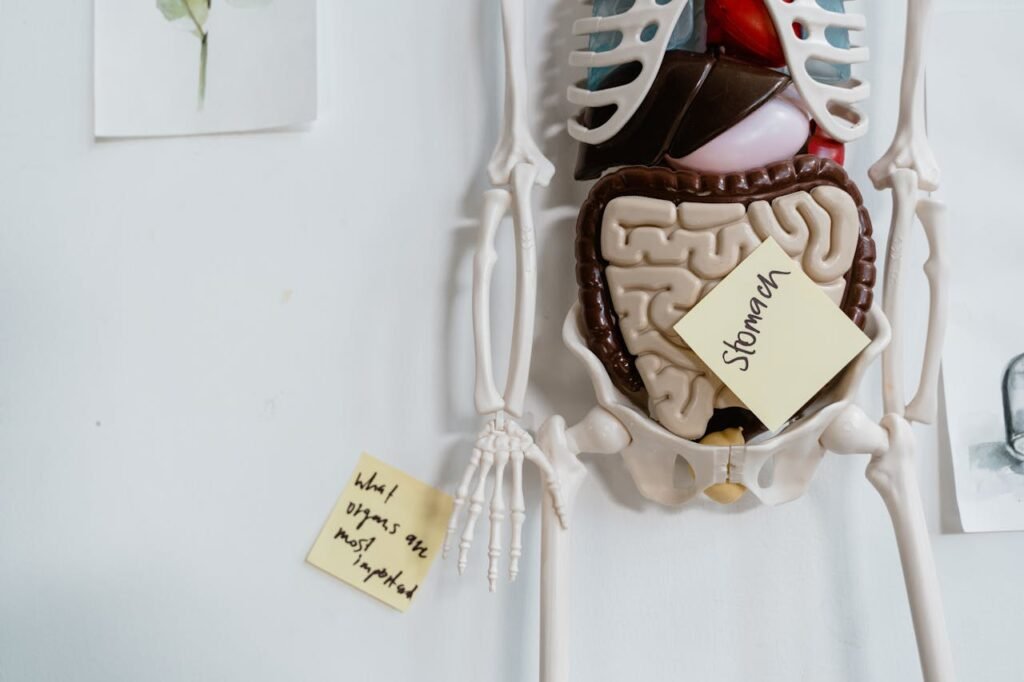Have you ever seen an old bicycle left out in the rain? The shiny metal parts slowly turn orange and flaky. That’s rust. It creeps over nails, bridges, ships, and even cars if we don’t take care of them. But what is rust, really? And why does it happen?
Rust isn’t just dirt on metal. It’s a chemical change—a reaction between the metal, air, and water. Every time you see rust forming, you’re actually watching science at work. The metal is slowly transforming into something new.
In this article, we’re going to explore rust in the simplest way possible. We’ll look at what it is, how it forms, why it matters, and what we can do about it. Think of it like peeling back the layers of an old gate or bicycle and discovering the science hidden underneath. By the end, you’ll understand not just what rust is, but also why it’s a problem humans have been fighting for centuries—and why it teaches us so much about chemistry, nature, and even life itself.
So, let’s begin at the very start: what exactly is rust?
What Exactly Is Rust?
Rust is not just “dirty metal.” It’s actually a brand-new substance that forms when certain metals react with air and water. The most common metal that rusts is iron. That’s why things made of iron or steel (which is mostly iron) are the ones you usually see turning orange or brown over time.
When iron rusts, it changes into something called iron oxide. This is the reddish-brown flaky layer you see on nails, gates, or tools left outside. Rust is weaker than the strong iron it replaces, which is why rusty objects often crumble, snap, or lose their shine.
So, in short:
- Rust is iron oxide.
- It forms when iron reacts with oxygen and water.
- It makes the metal weaker and less useful.
Why Does Rust Form?
Now, here’s the key question: why does iron even change in the first place?
All metals want to be in their most “stable” form. Iron, when buried deep in the earth, is usually locked inside ores—mixed with oxygen already. Humans dig it out, remove the oxygen, and turn it into pure iron or steel. But once iron is exposed again to air and water, it wants to go back to that stable form. Rust is basically iron’s way of saying, “I want to return to where I came from.”
The Role of Oxygen
Oxygen is all around us in the air. When iron touches oxygen, the atoms start to react. But oxygen alone is not enough to make rust appear quickly—it needs a partner.
The Role of Water
Water is what speeds everything up. Even a thin layer of moisture in the air, like humidity, can be enough to start rusting. Water helps carry tiny electric charges between iron and oxygen, which makes the reaction happen faster. That’s why metal rusts faster near the sea (lots of saltwater in the air) or in damp basements.
The “Recipe” for Rust
If we put it in very simple terms:
Iron + Oxygen + Water → Rust (Iron Oxide)
That’s the whole secret. Without water, rust is very slow. Without oxygen, rust cannot happen at all. But put all three together, and rust begins to grow.
Where Do We See Rust in Daily Life?
Rust is everywhere once you start noticing it:
- On old bicycles, swings, and fences left outside.
- On the underbody of cars, especially in rainy or snowy places.
- On bridges, ships, and buildings made of steel.
- On tools or nails that weren’t kept dry.
Rust is more than an eyesore. It can weaken buildings, break machines, and cost billions of dollars to fix worldwide. That’s why engineers and scientists spend so much time trying to stop it.
So now we know what rust is and why it forms. Next, we’ll dig deeper into the chemistry of rust—how exactly the reaction happens step by step, and why rust spreads once it starts.
The Chemistry of Rust – What’s Happening Inside
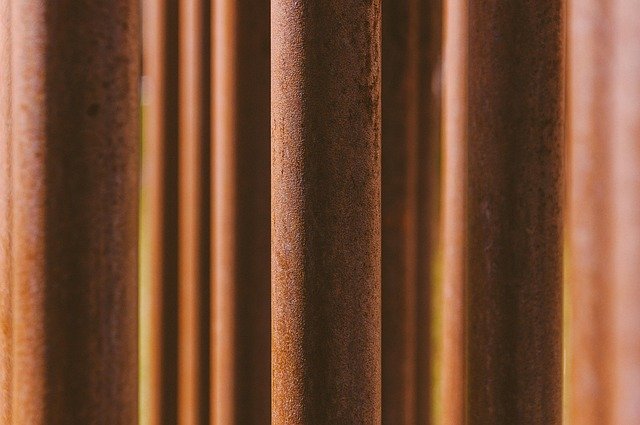
When you look at rust on the outside of a nail, it might just seem like a color change. But inside the metal, tiny reactions are happening. Let’s imagine the process in slow motion.
Step 1: Iron Loses Electrons
Metals like iron are full of tiny particles called electrons. These electrons can move around easily, which is why metals conduct electricity. When iron touches water, some of its atoms “let go” of electrons.
Think of it like this: iron is handing over little sparks of energy. These sparks don’t just vanish—they get picked up by oxygen in the air.
Step 2: Oxygen Grabs the Electrons
Now, the oxygen in air or dissolved in water takes those loose electrons from the iron. This changes the oxygen into a reactive form that can bond with the iron atoms.
Step 3: Water Helps Everything Along
Water doesn’t just sit there. It acts like a road that helps electrons move from place to place. If the water has salt in it (like seawater or even salty winter roads), the reaction gets even faster because salt makes the water a better conductor.
That’s why cars in snowy places rust so quickly—the salt used on icy roads actually helps rust form.
Step 4: Iron Atoms + Oxygen + Water → Rust
Finally, the iron atoms mix with oxygen and water to form a new substance: hydrated iron oxide, or rust. It looks orange, red, or brown, depending on the conditions.
Unlike strong, solid iron, rust is crumbly and weak. Instead of protecting the metal underneath, it flakes off, leaving fresh iron exposed to oxygen and water. That’s why once rust starts, it doesn’t stop—it keeps eating deeper and deeper into the metal.
Why Does Rust Keep Spreading?
You might think that once a thin layer of rust forms, it should protect the metal, like a shield. That’s what happens with some other metals. For example:
- Aluminum forms a thin oxide layer that protects it from further damage.
- Copper forms a green layer called patina, which also acts like a shield.
But iron’s oxide—rust—doesn’t stick well. Instead, it cracks and flakes away. Each time a piece falls off, fresh iron underneath is exposed. Oxygen and water get in again, and the process repeats.
This cycle is why rust is often called a “cancer of metals.” It spreads, weakens, and destroys structures unless humans step in to stop it.
A Real-Life Example
Think about an old bridge made of steel. At first, it’s shiny and strong. But over time, rainwater and oxygen start the rusting process. Rust forms, flakes away, and more layers underneath get attacked.
If no one paints or protects the bridge, the rust keeps spreading. After many years, the steel can become so weak that the bridge is unsafe. Engineers then have to repair or replace it—sometimes at huge cost.
So now we understand the chemistry of rust and why it keeps spreading once it starts. Next, let’s talk about the different factors that make rust faster or slower—like salt, humidity, and even temperature and heat.
What Makes Rust Faster or Slower?
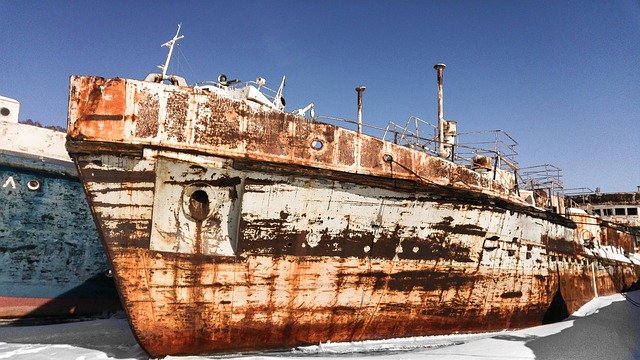
Rust doesn’t always happen at the same speed. Sometimes you see a bicycle rust in a few months, while other metal objects can last for years before showing any damage. The reason is that different conditions make rusting faster or slower. Let’s look at the main ones.
1. Water (Moisture)
Water is the biggest helper of rust. Even a thin layer of moisture in the air, like humidity, can be enough to start the reaction. That’s why tools in a damp basement rust more quickly than the same tools stored in a dry garage.
The wetter the environment, the faster rust appears. This is why metal objects left outside in the rain rust much quicker than those kept indoors.
2. Salt
Salt makes water a much better conductor of electricity, which speeds up the movement of electrons during rusting. That’s why metal near the ocean rusts so quickly. Seawater is salty, and the salty air carries droplets that speed up rust.
This also explains why cars rust more in places where roads are salted in the winter. The salt from the roads splashes onto the car’s underside, and the combination of water and salt makes rust spread very fast.
3. Oxygen in the Air
Rust can’t form without oxygen. Places with more oxygen (like areas with strong air circulation) may see rust form faster. However, even underwater, where there’s less oxygen, rust can still happen—just more slowly. That’s why shipwrecks eventually rust, even deep in the ocean.
4. Temperature
Heat speeds up most chemical reactions, and rusting is no different. In warmer climates, rust can spread faster because the molecules move around more quickly. But in very dry hot places, like deserts, rust can actually be slower because there’s not much moisture in the air.
5. Type of Metal
Not all metals rust the same way.
- Pure iron rusts quickly because nothing protects it.
- Steel (a mix of iron and carbon) also rusts, though sometimes more slowly depending on its composition.
- Stainless steel has chromium in it. When chromium reacts with oxygen, it makes a very thin, invisible film that protects the metal underneath. That’s why stainless steel sinks, utensils, and cutlery don’t rust easily.
- Aluminum and copper don’t form rust like iron does. Instead, they form protective layers (aluminum oxide or copper patina) that actually prevent further damage.
This is why some metals are chosen for outdoor use, while others need special protection.
Why Rusting Is a Big Problem
At first, rust just looks like a cosmetic issue—a spot of orange on shiny metal. But if ignored, rust weakens the structure.
- In homes, rusty pipes can burst.
- On cars, rust can eat holes in the body or weaken brakes.
- On large structures like ships, planes, and bridges, rust can cause accidents if it isn’t controlled.
Every year, rust costs the world billions of dollars in repairs and replacements. That’s why scientists, engineers, and builders are always looking for ways to stop it or slow it down.
So now we know the conditions that speed up rust and why it’s such a big issue. Next, let’s look at how humans fight rust—different methods used to protect metals from rusting.
How Do We Prevent Rust?
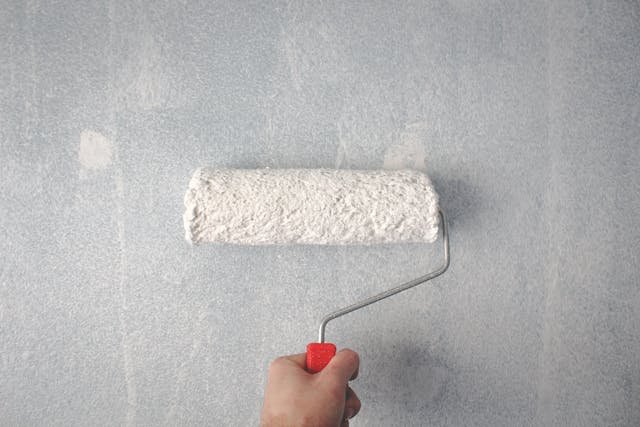
Since rust costs so much money and damages so many structures, people have invented clever ways to slow it down or stop it. None of these methods make iron “immune” forever, but they can protect it for many years.
1. Painting and Coating
One of the simplest methods is to paint the metal. A layer of paint blocks oxygen and water from touching the iron surface. As long as the paint stays unbroken, the metal underneath is safe.
That’s why fences, gates, and bridges are painted regularly. You might notice that when paint chips away, rust often starts in those exact spots—because the iron is exposed again.
Other coatings, like plastic layers or powder coatings, work in the same way. They create a barrier between metal and the environment.
2. Oiling and Greasing
Oil and grease also act as protective layers. They stick to the surface and keep moisture out. That’s why tools, bike chains, and machines often need to be oiled. If left dry, they rust faster.
Mechanics know this well: a thin layer of oil can make the difference between a tool lasting years or turning rusty in months.
3. Galvanizing
Galvanizing is a very smart trick. In this method, the iron is coated with a thin layer of zinc. Zinc is also a metal, but it rusts much more slowly. Even better, zinc sacrifices itself to protect iron.
Here’s how: when both zinc and iron are exposed to oxygen and water, the zinc reacts first. It gives up its electrons and corrodes before the iron does. As long as there is zinc left, the iron underneath stays safe.
That’s why galvanized nails, pipes, and roofing sheets last much longer outdoors.
4. Using Alloys (Mixing Metals)
Sometimes, instead of protecting pure iron, we change the metal itself. By mixing iron with other elements, we make it more resistant.
The best example is stainless steel. It contains chromium. When chromium meets oxygen, it forms a very thin, invisible layer of chromium oxide. Unlike rust, this layer sticks firmly and prevents more oxygen from reaching the metal. That’s why stainless steel doesn’t rust easily.
You’ll find stainless steel in sinks, kitchen utensils, and even skyscrapers. It lasts long because it protects itself.
5. Cathodic Protection
This is a more advanced method, used in pipelines, ships, and big metal structures. The idea is to connect the iron to another metal that will corrode instead. These “sacrificial anodes” (often made of zinc or magnesium) rust away while the main structure stays safe.
It’s almost like giving the rust a “decoy” to attack while the important metal is spared.
6. Regular Care
Sometimes, the simplest method is just good care:
- Keeping tools dry.
- Storing bikes and machines indoors.
- Cleaning off moisture quickly.
Rust prevention is a constant battle. But with the right care, we can make metals last much longer.
So now we know how humans fight rust through coatings, alloys, and protection. Next, let’s look at real-world examples of rust problems and how engineers deal with them—from bridges to airplanes to everyday objects.
Real-Life Examples of Rust
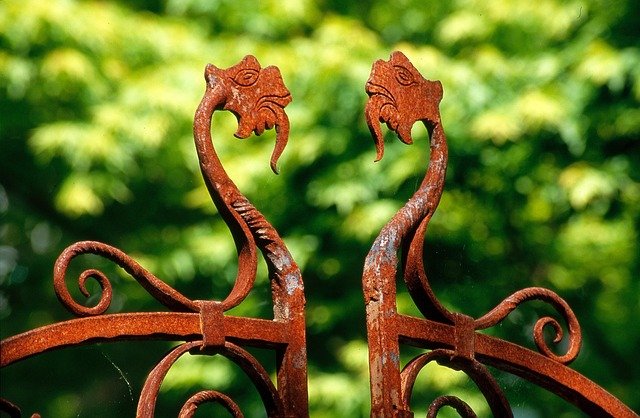
Rust isn’t just something that ruins bicycles or tools in your garage. It can affect entire cities, ships, and even airplanes. When rust is ignored, the results can be dangerous and extremely costly.
1. The Rusting of Bridges
Bridges are huge structures, often made of steel. Over time, rain, humidity, and pollution attack the metal. If not painted or protected, rust eats away at the steel beams.
A famous example is the Silver Bridge in the United States, which collapsed in 1967. Investigations showed that rust and stress cracks weakened the metal. Sadly, dozens of people lost their lives. Since then, engineers around the world have made regular rust inspections a top priority for bridges.
Even the Golden Gate Bridge in San Francisco is constantly painted. Workers repaint sections every year, not just for looks but to keep rust from creeping in. Without this endless care, the bridge would not survive the salty ocean air.
2. Ships and the Ocean
Ships live in one of the harshest environments for metal: seawater. The mix of salt and oxygen makes rust form very quickly. That’s why giant ships, oil rigs, and submarines use galvanizing, special paints, and cathodic protection to stay safe.
If rust isn’t controlled, a ship’s hull can weaken, leading to leaks or even sinking. Maintaining ships is a massive job that costs billions each year—but without it, world trade and travel would be impossible.
3. Airplanes and Rust
You might not think about rust when flying, but airplanes face it too. Moisture and changing temperatures can make rust appear on parts of the plane. Since airplanes must be extremely safe, engineers check them constantly for any signs of rust or corrosion.
A small patch of rust on a critical part could cause serious danger, so airlines spend huge amounts of time and money making sure planes stay rust-free.
4. Everyday Rust Disasters
Rust isn’t always about huge structures. Sometimes it causes small but costly problems in homes:
- Pipes can rust on the inside, causing leaks or dirty water.
- Gas tanks in old cars can rust, leaking fuel and becoming dangerous.
- Outdoor furniture can weaken and break if left unprotected.
Even though these are smaller examples, they remind us how powerful rust can be.
What We Learn From These Examples
These real-life cases show us a few important lessons:
- Rust is slow but steady. It doesn’t happen in one day, but if ignored, it can destroy even the strongest structures.
- Prevention is cheaper than repair. Painting, oiling, and checking metals regularly costs less than replacing a bridge or a ship.
- Science saves lives. Understanding the chemistry of rust helps engineers design better protection and avoid disasters.
Rust may look simple, but it has shaped how we build, travel, and live.
So now we’ve seen how rust affects the real world and why controlling it matters so much. Next, let’s explore how kids can learn from rust—fun experiments, simple observations, and life lessons that connect back to Debsie’s way of teaching science.
Rust Experiments for Kids – Learning by Doing
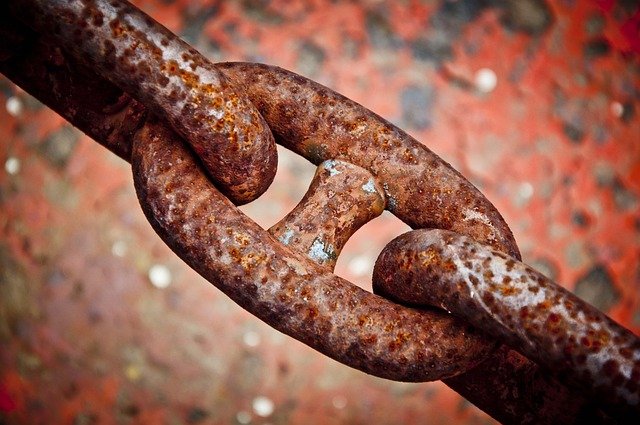
Rust might sound like a boring “chemistry word,” but to a curious child, it can be a window into discovery. Here’s how kids can explore it safely and what lessons they learn along the way.
Simple Rust Experiment at Home
You’ll need:
- A few iron nails (not stainless steel).
- Three small cups or jars.
- Water, salt, and cooking oil.
Steps:
- Put one nail in plain water.
- Put another nail in salty water.
- Put the third nail in plain water with a thin layer of oil floating on top.
Leave them for a few days and observe.
- The nail in plain water will rust slowly.
- The nail in salty water will rust much faster.
- The nail under oil may not rust at all, because the oil keeps air away.
This shows kids how environment changes the speed of rusting.
What Kids Learn from This
- Observation skills. Kids learn to look closely and notice changes—color, texture, and speed.
- Cause and effect. They see that salt speeds up rust, and oil slows it down. That’s chemistry in action!
- Problem-solving. They start to ask: “If I don’t want something to rust, what can I do? Paint it? Oil it? Keep it dry?”
- Patience. Rust doesn’t appear instantly. Waiting and checking each day teaches patience—a life skill often overlooked.
A Fun Bonus Test – Lemon vs. Baking Soda
Take two more nails.
- Rub one with lemon juice (acidic).
- Rub the other with baking soda paste (basic).
Wait and see which one rusts faster. This shows how pH affects rusting—acids usually speed it up, while bases may slow it down.
How Rust Teaches Life Lessons
Rust is slow, steady, and unavoidable if ignored. This makes it a perfect teacher—not just of chemistry, but of life skills.
- Patience: Waiting for rust to appear teaches kids that not all results are instant.
- Prevention mindset: They learn that taking care early (painting, oiling, drying) avoids bigger problems later.
- Curiosity: They discover that even “boring old nails” can tell exciting science stories.
- Problem-solving: Just like engineers protect bridges, kids can think of their own clever ways to stop rust.
At Debsie, this is exactly the kind of learning we encourage. We take everyday things—like nails rusting in a jar—and turn them into powerful lessons. Children don’t just hear “rust is iron oxide.” They see it, test it, and understand it.
So, rust is not just about chemistry. It’s about building curious minds, careful observers, and confident problem-solvers.
Conclusion – Rust: A Small Word, a Big Lesson
Rust may seem like nothing more than an orange stain on an old nail or bicycle, but now you know it’s much more than that. It is a chemical change—a battle between iron, water, and oxygen. Left alone, rust eats away at bridges, ships, cars, and even tiny tools in our homes.
But rust also teaches us powerful lessons. It shows us how nature always tries to return things to balance. It reminds us that prevention—like paint, oil, or smart design—is often better than fixing damage later. And it gives us a window into chemistry that we can see and touch in everyday life.
For kids, studying rust isn’t just about science—it’s about building skills. They learn patience as they wait for nails to change, curiosity as they test ideas, and problem-solving as they discover how to slow rust down. These are the same life skills they’ll use in math, coding, art, and even their future careers.
At Debsie, we believe every subject can feel alive like this. We take ordinary things—like rusting nails, baking bread, or testing pH—and turn them into moments of discovery. When kids see science in action, they don’t just memorize facts. They understand, explore, and grow confident.
So, the next time you spot rust on a gate, a tool, or a car, don’t just see damage. See a story. See chemistry. See an invitation to learn.
👉 Want your child to fall in love with science the same way? Sign up for a free trial class at Debsie today and watch curiosity turn into confidence.
Read Next:


